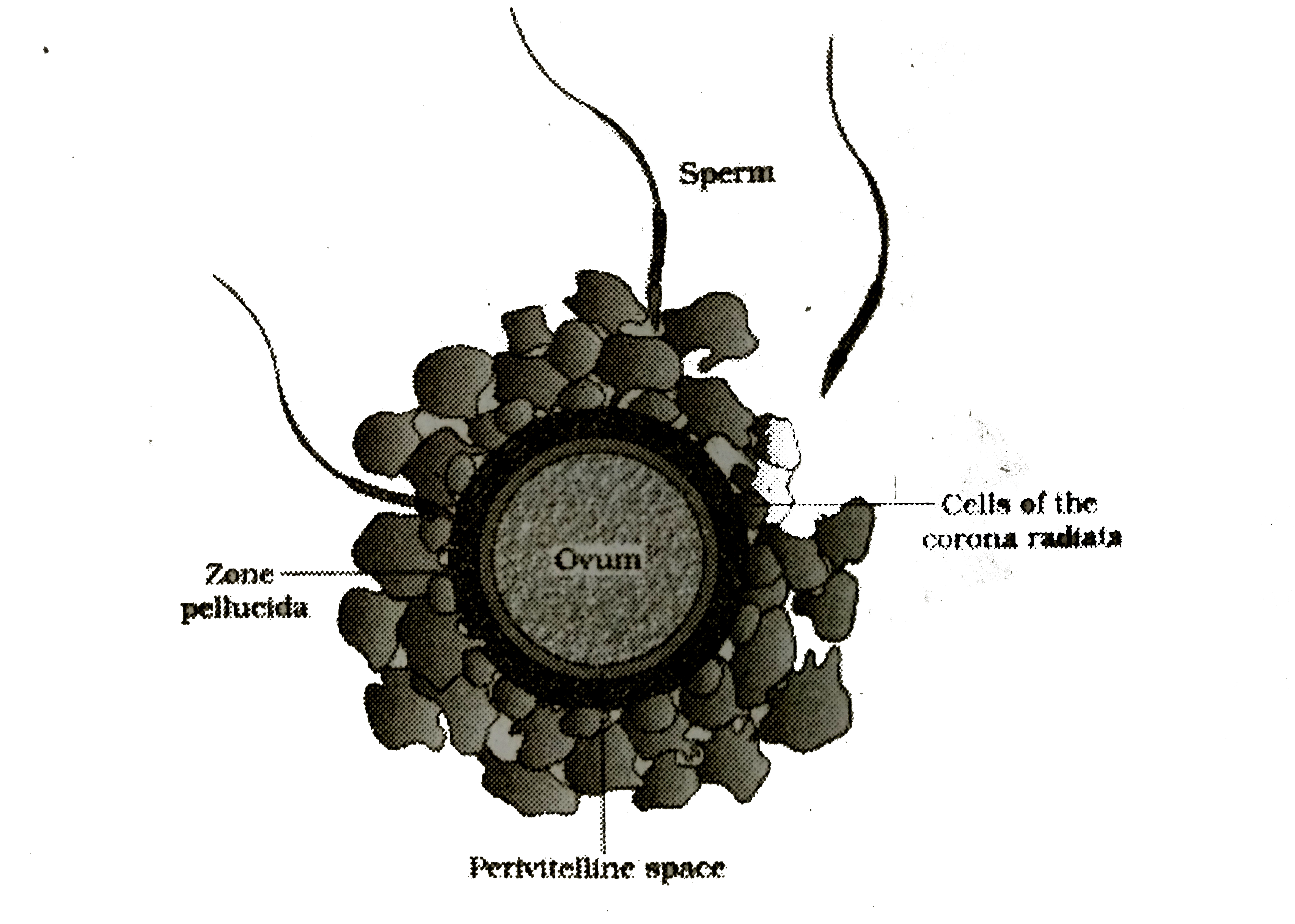The following is the illustration of the sequence of ovarian events (a - i) in human female.
ltimg src="https://d10lpgp6xz60nq.cloudfront.net/physics_images/SB_BIO_XII_SET_I_2012_E01_032_Q01.png" width="80%"gt
(i) Identify the figure that illustrates ovulation and mention the stage of oogenesis it represents.
(ii) Name the ovarian hormone and the pituitary hormone that have caused the above mentioned event.
(iii) Explain the changes that occur in the uterus simultaneously in anticipation.
(iv) Write the difference between 'c' and 'h'
(v) Draw a labelled sketch of the structure of a human ovum prior to fertilization.
(i) Stage of Oogenesis is represented by (D Mature Graafian follicle.
(ii) Ovarian hormone - Estrogen.
Pituitary hormone - Luteinsing hormone (LH)
(iii) Endometrium proliferate (glands become cork-screw shaped) highly vascularised with high degree of regeneration anticipating implantation of the fertilised ovum.
(iv) c-developing follicle, h-regressing corpus luteum. (v) 
Similar Questions
Match the following Column A to Column B

View SolutionMatch the following Column A to Column B

View SolutionIn Fig, find the value of x.

View SolutionThe following is the illustration of the sequence of ovarian events (a - 1) in a human female. (a) Identify the figure that illustrates ovulation and mention the stage of oogenesis it represents.
(b) Name the pituitary hormone that has caused the above mentioned event.
(c) Explain the changes that occur in the uterus simultaneously in anticipation
(d) Write the differences between 'c and 'h'.
(e ) Draw a labelled sketch of the structure of a human ovum prior to fertilization.

View SolutionFind the area of figure given below.

View SolutionMatch the following lists:

View SolutionIdentify the cell organelle 'A' :-

View SolutionFor shown situation find ∠BCA :-

View SolutionAt x=0, value of dydx is :

View SolutionAt point P, the value of dydx is :

View Solution
